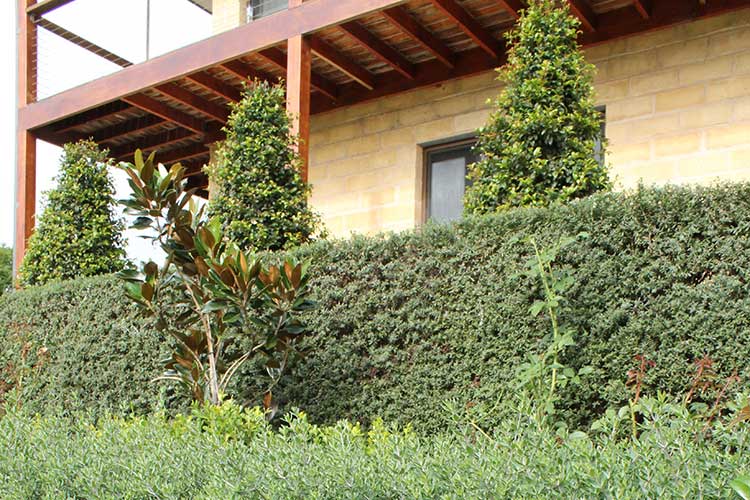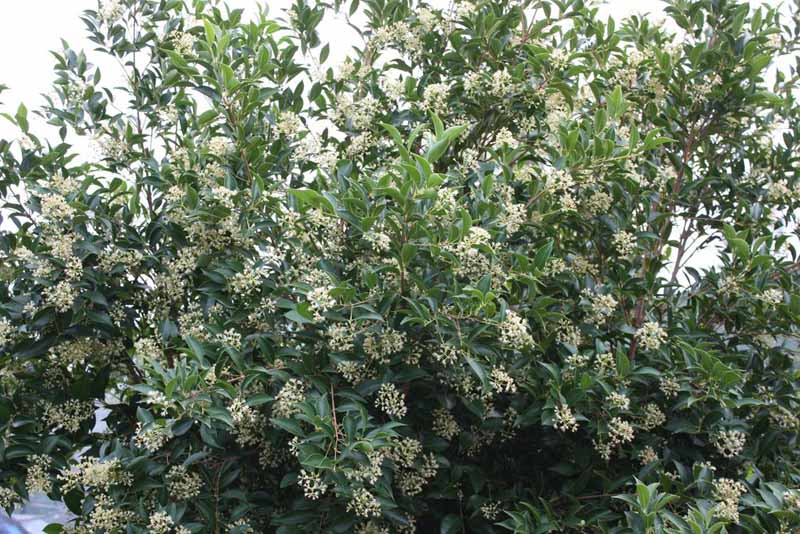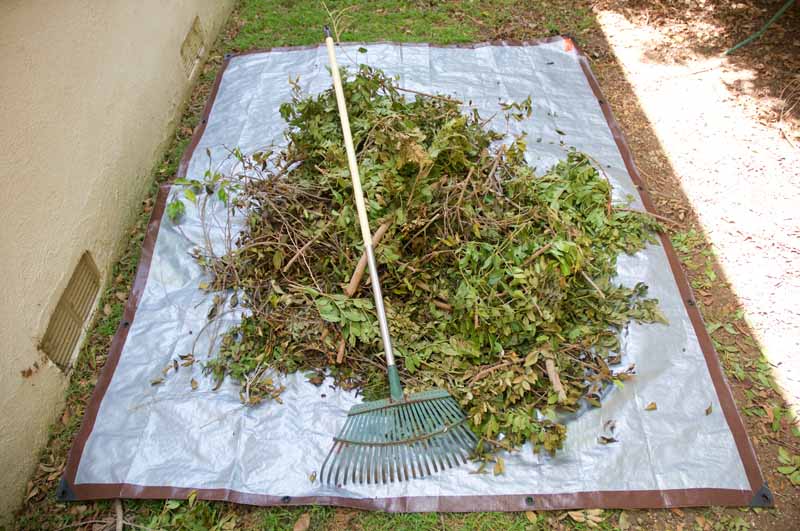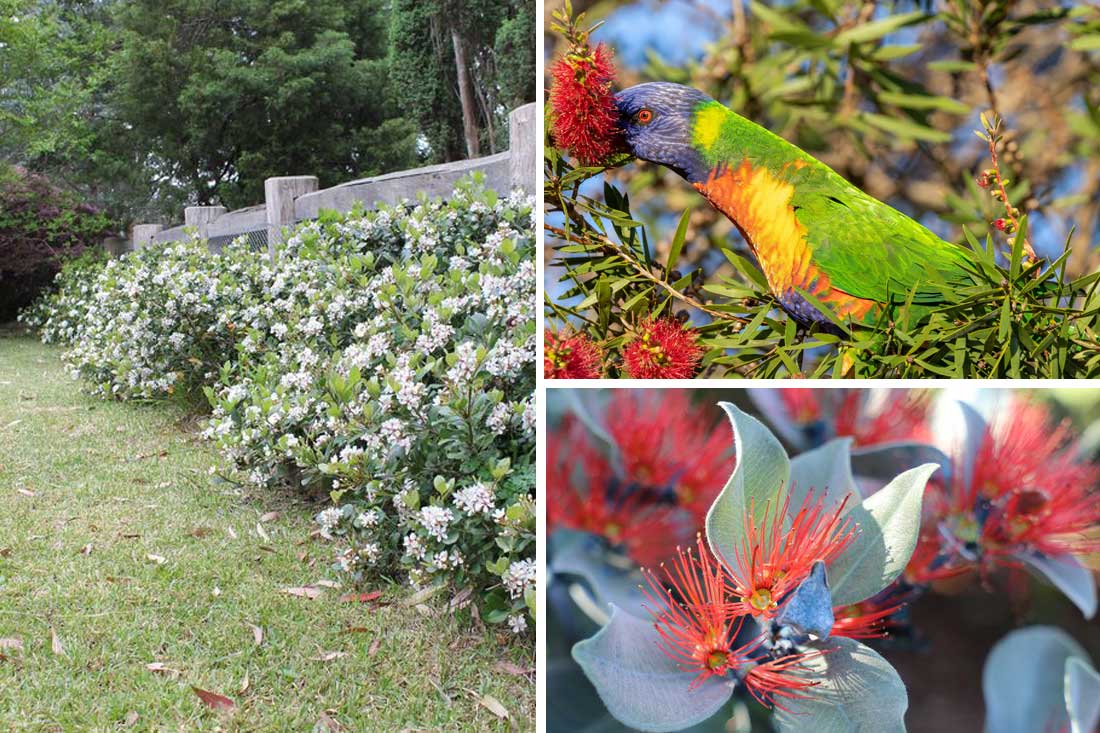One of the most common uses for hedges in modern gardens is for screening. This may be to create privacy in our gardens, or block unsightly views, or even to reduce traffic noise and pollution. Hedges are popularly considered in these situations as they are neat, green and don’t take up too much room. When looking at screening options, hedges are often a very good solution but they are not the only option and are not always the most appropriate option.
Factors to consider when looking at screening plants include the desired height, the available space and maintenance requirements.
When screening is desired at a height of 6m or more (eg 2 storey buildings) trees are the best option. Trees however require the most amount of ground space and are not recommended for small gardens or planting too close to buildings or pipes. This does create a conundrum for many modern gardens where the available space is very limited and the neighbouring buildings can be both imposing and have windows or balconies looking directly into neighbours gardens. Where space permits Sweeper®Waterhousea floribunda ‘DOW20’ PBR is an excellent choice, growing 7-12m tall with a width of 5-8m. It has branches all the way to the ground giving dense screening from the ground up rather than having a bare trunk and providing privacy only at the top as most trees are want to do.
Bamboo is often considered for narrow spaces, and in many situations works very well. Care should always be taken when choosing to use bamboo as it can be a very difficult plant to control, even the clumping varieties.
Pencil pines are a common choice for narrow areas where a tall screen is required, and they perform well if planted in a suitable climate zone and suit your garden style. The Indian Mast tree is a tall narrow tree suitable for screening but best suited to hot climates and is not readily available in nurseries.
An excellent native alternative for narrow areas is Slim™ Callistemon viminalis ‘CV01’ PBR. Growing to a maximum height of 3m it is extremely hardy and an ideal choice for screening tin sheds, metal fences and other unsightly views in potentially harsh situations. Slim™ is a variety with a very narrow growth habit, only growing to approximately 1.3m wide but can be kept pruned to as narrow as 60cm.
Pinnacle™ Syzygiumaustrale ‘AATS’ PBR is another superb choice for those tight planting areas. It is a dense native which is hardy, suited to a wide range of climate types and garden styles and is also the only truly slender lily pilly growing to a maximum of 1.5m wide with a height of 6- 10m if left unpruned, although it can easily be pruned to a height of 2m. It can be sculpted to create tall topiary shapes or even tall cones shapes reminiscent of pencil pines. Its narrow nature means significantly less pruning is required to keep it in shape than many other hedges.
The slender habit of both Slim™ and Pinnacle™ is particularly valuable for hedges in narrow spaces. A common problem with large hedges is trying to keep them significantly narrower than their natural growth habit will often result in loss of density and bare lower branches. This problem can be avoided when using Slim™ or Pinnacle™.
If you do require a hedge to be taller than approximately 3m you will need to think about maintenance – will you be able to reach to prune the top of the hedge? If not you will do best to choose a shrub or small tree with a slender habit which does not need regular pruning. Keep in mind that the nature of most plants will be that as they get taller so too do they get wider.
Red Head™Acmena smithii ‘BWNRED’ PBR and Sublime™Acmena smithii ‘DOW30’ PBR are also very valuable screening lily pillies with attractive new growth and dense habit, however these lily pillies will need a width of at least 2m in order to perform well at their full height of 5- 6m. They are both highly myrtle rust and psyllid resistant so will need very little care in order to look great all the time. The dense compact nature of both plants means that excessive pruning is not needed to keep them in compact and neat hedge form. Red Head™ features red new growth making it a good native alternative to photinia, and providing more reliable foliage colour in warmer areas than photinia will. The dense foliage of Red Head™ is fire retardant so is ideal for use in fire prone areas. Sublime™ features refreshing lime green new foliage and dense foliage all the way to the ground. Masses of white fluffy flowers appear in summer but it rarely produces berries.
Other lily pillies are available which also make wonderful hedges – from very large to very small. In fact the lily pillies have provided us with an enormous variety of wonderful hedging plants, their natural dense habit and glossy leaves lending them perfectly to use as attractive hedge plants. This degree of variety can make for difficult choices. It is important to do your research and understand the variety you are choosing as height and final size and form will be very important. Many lily pilly hedges have been neglected and have resulted in a row of medium sized trees too large for the space and unable to be restored into a hedge with dense foliage to ground level. Choosing the most suitable variety in the first place prevents long term difficulties when the plants grow too high and lose lower growth.
With any choice of tall screening plants care should be taken to ensure there is sufficient space at ground level to grow the plant and its long term growth habits are not going to be too different from what you ultimately want the plant to do – if they are, you will have maintenance problems and a disappointing screen.
Of course screening does not always need to be high. Quite often a hedge of 1-3m is perfectly sufficient to block the view of a road or busy footpath or from a neighbour’s yard. Within this size range the choice of hedging plants is much broader. At this size a hedge is much easier to reach to keep well pruned and both formal and informal hedges work very well.
*Article published by Kate Wall






